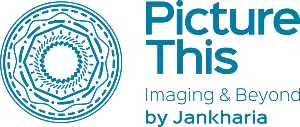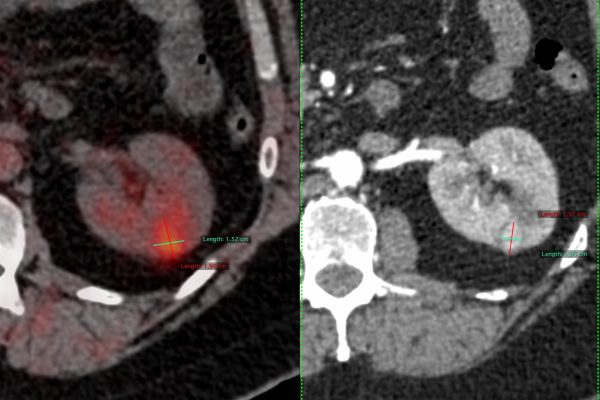The Advantages of 3D Mammography for Early Detection
In the realm of breast cancer detection, 3D mammography—also known as digital breast tomosynthesis—has emerged as a game-changer. This cutting-edge technology is significantly enhancing the accuracy and reliability of breast cancer screening, offering a superior alternative to traditional mammogram techniques. Early identification of breast cancer is critical for women since it significantly increases the chance of a favourable outcome. The advent of 3D breast imaging has made this early detection more attainable, ultimately saving lives.
What is 3D Mammography?
3D mammography, or digital breast tomosynthesis, represents a significant advancement in breast imaging technology. Three-dimensional (3D) breast imaging takes several X-ray pictures of the breast from various perspectives, as opposed to traditional mammograms, which only provide two-dimensional images. These images are then combined to create a detailed, three-dimensional picture of the breast tissue. With the help of this cutting-edge method, radiologists can study the breast layer by layer to get a clearer view.
One of the limitations of traditional mammograms is the potential for overlapping tissue images, which can obscure small abnormalities. Women with dense breast tissue are particularly affected by this since they are more likely to miss early indications of breast cancer. Digital breast tomosynthesis addresses this issue by offering a clearer, more detailed image, thereby improving the accuracy of the mammogram scan and reducing the chances of false positives and negatives.
The Vitality of Early Breast Cancer Detection
Breast cancer is among the most common cancers affecting women globally, making early detection critical for improving survival rates. The prognosis improves and the more treatment choices become accessible the sooner breast cancer is identified. For decades, mammogram scans have been the gold standard in breast cancer screening. With the introduction of 3D breast imaging, the precision and dependability of these scans have been significantly enhanced. Early detection of breast cancer through 3D mammography allows healthcare providers to identify tumours at a stage when they are most treatable. Early detection not only improves the chances of a successful outcome but also often means that less aggressive treatments are required, leading to a better quality of life for patients. Moreover, catching breast cancer early
can help reduce the emotional and financial burden on patients and their families, making timely screening an essential component of preventive healthcare.
Key Advantages of 3D Mammography
The benefits of 3D mammography, or digital breast tomosynthesis, extend well beyond the early detection of breast cancer. Below are some of the key advantages that make this technology a superior choice for breast cancer screening:
1. Improved Detection Rates
One of the most significant benefits of 3D breast imaging is its ability to detect breast cancer more accurately. Studies have shown that digital breast tomosynthesis can increase cancer detection rates by up to 40% compared to traditional mammograms. This improvement is particularly crucial for women with dense breast tissue, where conventional methods may fail to detect small tumours. By providing a clearer and more detailed view of the breast tissue, 3D mammography helps radiologists identify abnormalities that might otherwise go unnoticed.
2. Reduction in False Positives
False positives can be a significant source of anxiety for patients, leading to unnecessary additional tests and emotional distress. Traditional mammograms can sometimes produce false positives due to overlapping tissue, which may appear suspicious. 3D breast imaging reduces the likelihood of false positives by providing a more detailed, layered view of the breast, allowing radiologists to differentiate between benign tissue and potential tumours more accurately. This means fewer follow-up tests and less stress for patients.
3. Better Visualisation of Dense Breast Tissue
Dense breast tissue is a common challenge in breast cancer screening, as it can make it more difficult to detect abnormalities with traditional mammograms. Women with dense breasts have more fibrous or glandular tissue than fatty tissue, which can obscure small tumours. 3D mammography offers better visualisation of dense breast tissue by capturing multiple images from different angles. This layered approach helps radiologists see through the dense tissue, improving the detection of breast cancer and reducing the chances of a missed diagnosis.
4. Enhanced Comfort During the Mammogram Scan
While comfort may not be the primary concern for most women undergoing a mammogram scan, it is still an important factor. Traditional mammograms require the breast to be compressed between two plates to capture the images, which can be uncomfortable or even painful for some women. 3D breast imaging, while still requiring compression, often results in a more comfortable experience because it involves shorter compression times. Additionally, the ability to capture images from multiple angles means that fewer retakes are necessary, further reducing discomfort during the procedure.
5. More Accurate Treatment Planning
In cases where breast cancer is detected, 3D mammography provides more detailed information about the size, shape, and location of the tumour. This additional information is crucial for accurate treatment planning. By having a clearer picture of the tumour’s characteristics, healthcare providers can tailor treatment plans to the specific needs of the patient, potentially improving outcomes and reducing the need for more invasive procedures.
6. Reduced Radiation Exposure
Another advantage of 3D mammography is that it can reduce the need for additional imaging, which in turn reduces overall radiation exposure. While the radiation dose from a single mammogram scan is low, minimising exposure is always preferable. Digital breast tomosynthesis often eliminates the need for supplementary imaging by providing a comprehensive view of the breast in one go. This expedites the diagnostic procedure while simultaneously lowering the radiation exposure level for the patient.
7. Improved Detection in Younger Women
Younger women, particularly those under 50, often have denser breast tissue, making traditional mammograms less effective. 3D breast imaging is especially beneficial for this age group, as it provides a clearer view of the dense tissue, improving the early detection of breast cancer. This is especially crucial because early detection is the key to a successful outcome for the treatment of breast cancer, which can be more aggressive in younger women.
8. Beneficial for Women with a Family History of Breast Cancer
For women with a family history of breast cancer, regular screening is vital. 3D mammography offers these women a more accurate and reliable screening tool, increasing the chances of detecting breast cancer at an early stage. This is particularly beneficial for those at higher risk, as early detection can significantly impact treatment options and outcomes.
The Role of 3D Mammography in Personalised Medicine
As healthcare increasingly embraces personalised medicine, advanced imaging technologies like 3D mammography are playing a crucial role. Digital breast tomosynthesis not only aids in the early detection of breast cancer but also provides valuable information that guides personalised treatment decisions. For instance, the detailed images produced by 3D breast imaging can help determine the most appropriate surgical approach, whether breast-conserving surgery or mastectomy is the best option, and how radiation therapy should be planned.
Moreover, 3D mammography can also be instrumental in monitoring patients who have already undergone treatment for breast cancer. Regular mammogram scans using digital breast tomosynthesis can help detect any recurrence of the disease early, allowing for timely intervention and reducing the risk of further complications.
The Future of Breast Cancer Screening
The advantages of 3D mammography are clear, and as this technology continues to evolve, it is likely to become the gold standard in breast cancer screening. With its ability to provide more accurate and detailed images, reduce false positives, and improve the detection of breast cancer, digital breast tomosynthesis represents a significant advancement in women’s health.
However, it’s essential to recognise that 3D mammography is just one component of a comprehensive breast cancer screening strategy. Women should continue to follow recommended screening guidelines, including regular mammogram scans and other imaging tests, as advised by their healthcare provider. Additionally, maintaining a healthy lifestyle, being aware of breast cancer risk factors, and performing regular self-examinations are all crucial components of early detection and prevention.
Conclusion
3D mammography, or digital breast tomosynthesis, offers numerous advantages over traditional mammograms, particularly in the early detection of breast cancer. By providing clearer, more detailed images of the breast tissue, 3D breast imaging improves detection rates, reduces false positives, and enhances the visualisation of dense breast tissue. These benefits increase the chances of successful treatment and contribute to better overall patient outcomes.
As the medical field continues to advance, the adoption of 3D mammography is expected to grow, making it a vital tool in the fight against breast cancer. For women, this means more accurate and reliable screening, leading to earlier detection and a greater likelihood of successful treatment. Ultimately, the advantages of 3D mammography highlight the importance of regular breast cancer screening and the ongoing need for innovative technologies to improve women’s health.
Incorporating 3D breast imaging into routine mammogram scan is a proactive step towards better breast cancer detection and treatment, ensuring that more women can live healthy, cancer-free lives.


